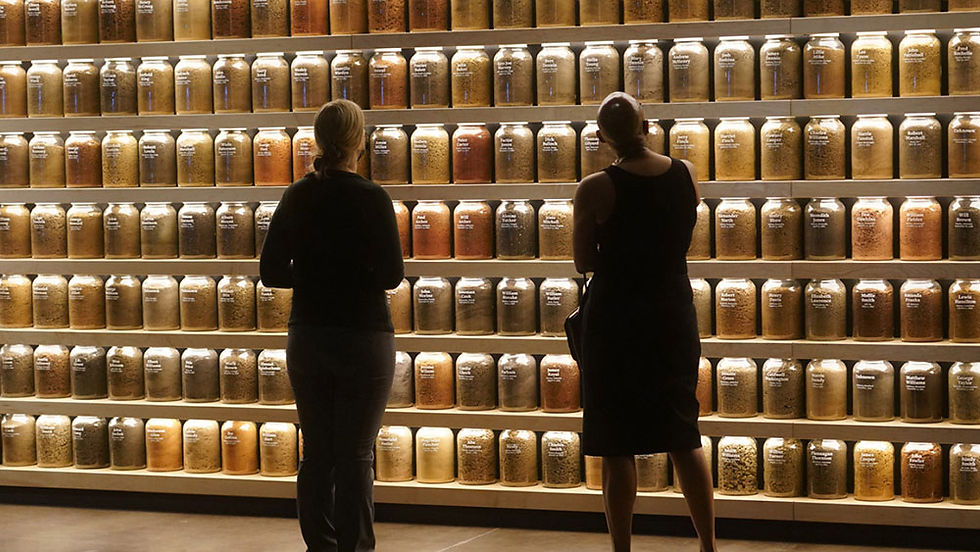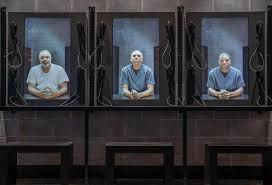I have come to Alabama along with over 30 members of our synagogue on what was titled a Civil Rights Journey. What I realized from the very first place we visited is that journey is the key part of that word. The "story" around the civil rights movement is so much more involved than the key years in the 60s. Hundreds of years of legalized slavery, laws, moral corruption, distortion of religion, and inequality did not dissipate with the emancipation proclamation. Then years of building frustration combined with building communities and education and allies led to the monumental work of the civil rights movement. And the big ah-ha for me was being at the

Equal Justice Initiative and seeing how much these elements wove into any problems we see today. I expected to see some very disturbing history and learn more details. And I did - such as the soil
jars taken from the ground underneath areas where men, women, and children were lynched for all manner of offense (often unproven), or the visual representation of the ships with slaves arriving in the Americas where around 1650 the black dots representing the ships start streaming across the screen. But what I

did not expect to feel was the crushing feeling as I walked into the rooms representing the post civil rights era - like mass incarceration. Realizing how the same techniques, like criminalizing things that were more likely to happen in the African American community, were used to continue to subjugate people.
We then had the z'chut to visit the Freedom Monument Sculpture Park, which recently opened. This part was filled with a variety of artistic representations of different parts of the experience of slavery. At the end of the path there is the National Monument to Freedom which looks like a book and is covered in last names.

There's 120,000 names and they represent the almost 4 million enslaved people who were emancipated through their family names. The most meaningful moments for me were watching some of the other visitors to the park looking for and finding their names on the wall. Enslaved people lost their connection to their ancestral land, or even if they were born in the United States they could be sold away from the area where they were born and their families. Over and over again, there was, at best, indifference and, at worst, intention to separate people from their history. But this wall gave some of it back. People could find their name and it is a literal physical solid marker to say that they had a history here in the United States. I think it's important to feel that grounding and that acknowledgment.


Comments